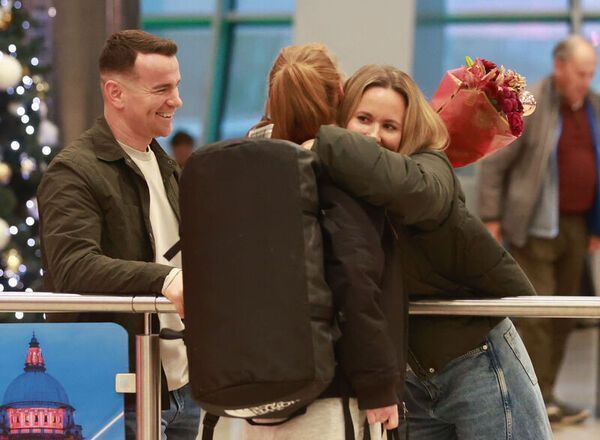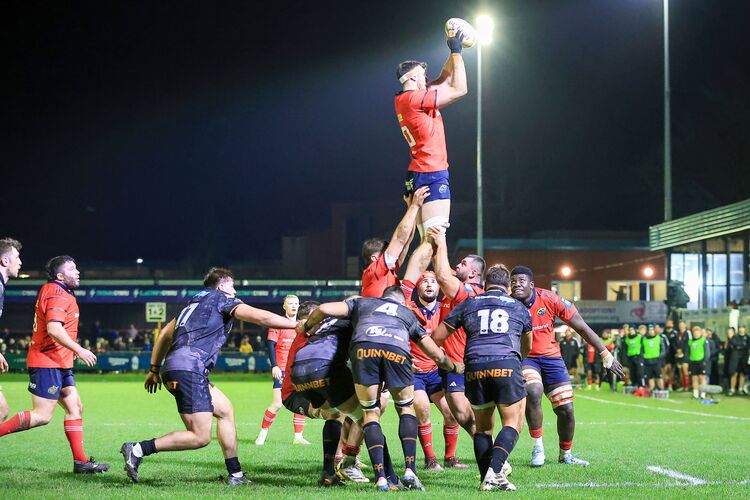Newly-promoted AFC Wimbledon will make its League Two debut against Bristol Rovers next Saturday. Just nine years after the club was formed by fans angry at the decision to move the old Wimbledon to Milton Keynes under the new name of the MK Dons, their very presence in the fourth tier of England's professional game is a remarkable achievement. If this fixture marks the culmination of an odyssey for all involved then, it is also deserving of a curious footnote in Irish soccer history.
Exactly fifteen years ago this month, the fabulous, fantastical and, in the end, utterly ludicrous notion of Wimbledon moving to Dublin was first mooted. It's important to note that the idea of transplanting a soccer club from south London to west Dublin was not some unfortunate by-product of the Celtic Tiger madness later to infect the nation. This was August, 1996 and the country hadn't yet lost its collective mind.
This proposal was born out of property developer Owen O'Callaghan wanting to build a soccer stadium in Neilstown, Wimbledon's Sam Hamman wanting to find a fan-base for his Premier League club, and various others wanting to cash in on the Irish mania for all things English football. One of the great what might have beens in recent Irish history, it began when O'Callaghan, U2 manager Paul McGuinness, and Eamon Dunphy were spotted together at at Wimbledon game in Selhurst Park. From there, it took off.
In the early months of the 1996/97 season, there was all sorts of talk about deals being done for the Irish group to take over and plans being readied for them to start the next Premier League season from a base in Dublin. That Joe Kinnear, Dunphy's old pal from his Ireland days, was the manager of Wimbledon (and somebody who regularly cited the difficulty of his budget-strapped outfit competing with richer, better-supported clubs) added to the stew of intrigue. As far-fetched as it initially sounded, those involved appeared deadly serious about the whole thing.
We knew this when a handful of us turned up to a swanky lunch in the St. Stephen's Suite of the Shelbourne Hotel in Dublin, the organisers obviously knowing journalists are more easily persuaded of anything when they receive good food. While it was the first time the Irish media were allowed access to Hamman, the real star attraction at that bash was Jean Louis Dupont. He was the Belgian lawyer who changed football forever when he took on the case of Jean-Marc Bosman against UEFA and won players the right to move for free within the EU at the end of their contracts.
As the person single-handedly responsible for transforming the transfer market and sending players' wages into the stratosphere, Dupont was a genuine heavy hitter. He had been brought in to show the people involved in this proposal were in earnest about challenging any FAI or UEFA attempts to block the move on legalistic grounds. Of course, it was widely known but not reported for libel reasons that at least one prominent FAI official had held secret meetings with a representative of the consortium.
Clandestine meetings were the order of the day back then. Those journalists considered sympathetic to the project (What? You thought journalists were objective!) got regular briefings, some taking place at Dunphy's pad off Baggot Street. For sportswriters, most of whom wouldn't know a news story if it came up and punched them in the face, this was our equivalent of Woodward and Bernstein meeting Deep Throat in underground car parks. Except we were on Dunphy's couch, drinking coffee, listening to O'Callaghan and himself articulate their dream.
At one point in the whole escapade, there was actual, legitimate talk of the Wimbledon support base (season ticket holders numbered less than a thousand) being flown to Dublin for every home game. That's how small their dedicated band of followers was and that's how much money the club expected to make from its new location. The consortium wrongly assumed that pitching a Premier League tent in Ireland would be enough to get all the United, Liverpool and Arsenal fans to suddenly switch allegiances to the Dublin Dons.
The money was going to be so plentiful that the problem of League of Ireland clubs objecting to the move was to be easily circumvented too. The plan was to give every one of them a 250,000 punts sweetener to get them on board. Within weeks of this detail being leaked, the talk was that 14 of the league clubs were in favour of the move. In truth, most of them were determinedly opposed to the whole thing, the opposition led by the likes of Pat Dolan, then the heart and soul of St. Patrick's Athletic.
The true Wimbledon fans, many of whom will be watching their team take on Bristol Rovers on Saturday, weren't happy either. They launched several protests. Befitting the supporters of the most unfashionable club in the Premier League, the demonstrations were small but heartfelt. After one game against Manchester United at their rented home of Selhurst Park, a truly depressing, atmosphere-less stadium, they staged a sit-in, handing out leaflets and haranguing Hammam.
Hamman eventually sold the club to a pair of Norwegians in 1999 and the Dublin Dons idea petered out, although it was briefly mentioned en passant in one of the Tribunals. Those fans who roared their protests that Saturday night have won out in the end.
It says much about how crazy things were for a few years there back in the late nineties that in the middle of the Dublin Dons' madness, there were also serious reports of Clydebank moving from Scotland to Ballsbridge where they intended to play out of the RDS. Despite the presence of Colm McCarthy on the board of the Scottish outfit, this one disappeared even quicker than the Wimbledon proposal. And indeed, within a few years, Clydebank were gone out of professional football altogether. There's a moral to the story in there somewhere.








